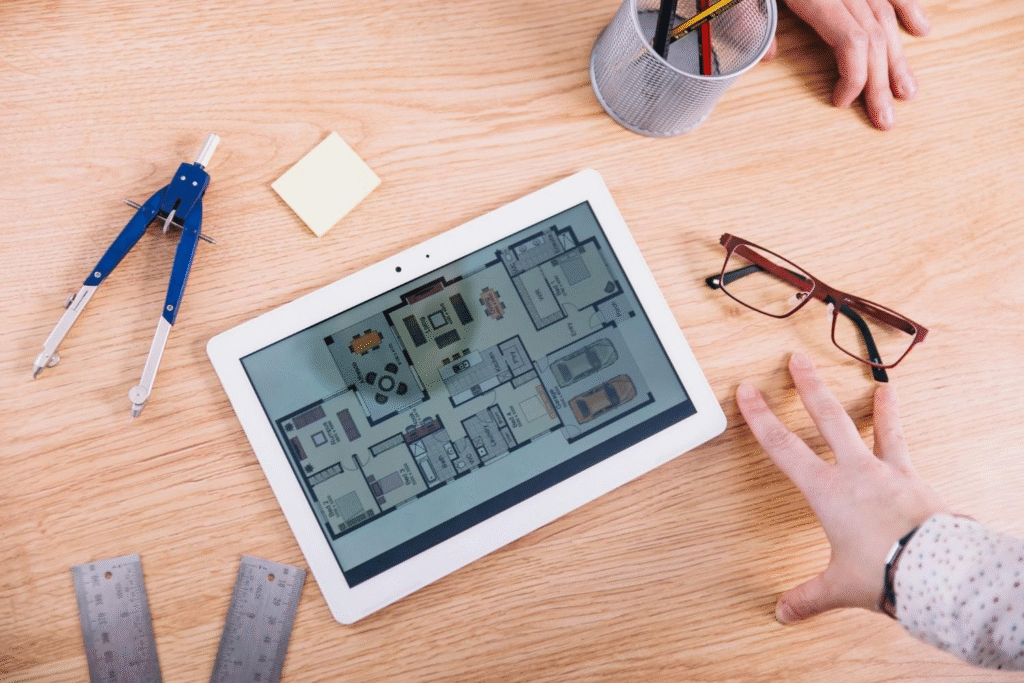The design of a space can do more than offer shelter—it can actively influence how we feel, think, and connect with others. As society places growing importance on mental, physical, and emotional wellbeing, architecture has evolved to meet these human needs through purposeful design. Today’s architects are no longer focused solely on aesthetics and structural performance. Instead, they’re embracing a holistic approach that combines visual appeal, function, and wellness. This shift is transforming homes, workplaces, schools, and community centres into spaces that foster balance, comfort, and health.
When intentionality drives architectural decisions, the result is a built environment that uplifts its occupants. From the first sketch to the final brick, the pursuit of wellbeing informs every aspect of the design journey. And when paired with expert execution from skilled construction companies, these thoughtful concepts become reality—spaces that nurture the human spirit in daily life.
The Link Between Architecture and Human Wellbeing
Architectural design is not simply about visual harmony or structural soundness. It’s about crafting experiences. The configuration, flow, and atmosphere of a space can influence how people feel and behave. Research shows that well-designed environments can improve concentration, lower stress, boost productivity, and even support faster healing in medical settings.
As a result, the architectural community has increasingly prioritised design elements that promote health and comfort. Light, air, sound, material, and spatial planning now work together in a unified strategy that supports wellbeing. This trend is evident across sectors—from residential buildings to offices, schools to hospitals. Architects are redefining what it means to create a “good” space, moving beyond function into a deeper realm of human-centred design.

Core Elements of Purposeful Architectural Design
Natural Light and Ventilation
Natural light is a key component of wellness architecture. Exposure to daylight helps regulate circadian rhythms, supports vitamin D synthesis, and enhances mood. Strategic placement of windows, skylights, and open spaces allows sunlight to permeate interiors, reducing the reliance on artificial lighting.
Similarly, good ventilation is vital for physical health. Architects incorporate cross-ventilation and air circulation strategies to minimise stale air and indoor pollutants. This not only improves comfort but also enhances cognitive performance and reduces the risk of respiratory issues.
Space Planning and Functionality
How a space is organised directly affects our psychological experience. Cluttered layouts can cause tension and confusion, while intuitive, open arrangements promote calm and ease. Purposeful design focuses on creating natural movement through a building, ensuring accessibility, flow, and adaptability.
Flexible spaces are increasingly popular, especially in modern homes and workplaces. Architects are crafting rooms that can shift in purpose—home offices that convert to guest rooms, or meeting spaces that support both collaboration and privacy.
Acoustic and Thermal Comfort
Noise pollution can be an overlooked stressor in design. Acoustic control is a critical factor in spaces like schools, hospitals, and homes, where focus or rest is essential. By using sound-absorbing materials and thoughtful layout strategies, architects can limit distractions and protect privacy.
Temperature is another key contributor to wellbeing. Architects now balance insulation, airflow, and materials to achieve thermal comfort year-round. Smart building technologies further support this by automating climate control to maintain consistent indoor environments.
Material Choices and Texture
The feel and appearance of a material can shape our response to a space. Warm woods, natural stone, and textured finishes often evoke feelings of calm and connection. Eco-friendly materials are not only healthier for the planet but also for the people within the space—reducing exposure to toxins and allergens.
Architects are also paying attention to tactile interactions, selecting surfaces that engage the senses and offer comfort. From soft fabrics in lounges to durable finishes in kitchens, the choice of material now reflects the intended emotional and physical experience.
Designing for Different Types of Wellbeing
Emotional and Mental Wellbeing
A calm environment can ease anxiety and promote focus. Architects use soft colour palettes, natural materials, and open space to reduce sensory overload. Minimalist design doesn’t mean bare—it means refined and intentional, creating a sanctuary-like setting that supports mental clarity.
Incorporating views of nature, indoor plants, and biophilic design principles further contributes to mental wellness. These strategies ground individuals and foster a sense of calm that’s essential in today’s fast-paced world.
Social and Communal Wellbeing
Architectural design has a role to play in encouraging social interaction and building community. Shared spaces—like courtyards, lounges, or open kitchens—invite conversation and collaboration. For families, thoughtful design can help members stay connected while still offering pockets of privacy.
Inclusivity is also vital. Architects now design with a range of physical and sensory needs in mind, ensuring that spaces are accessible and usable for people of all ages and abilities.
Physical Wellbeing and Movement
Encouraging physical activity through design is a growing priority. This includes prioritising staircases over lifts, designing walkable layouts, and integrating outdoor access. Courtyards, rooftop gardens, and ground-level terraces draw people outside and promote regular movement.
Additionally, designs that allow easy navigation and reduce physical barriers support users in maintaining independence and staying active throughout their day.
The Architect’s Role in Purpose-Driven Design
Architects sit at the intersection of vision and implementation. Their role in promoting wellbeing begins with listening—to clients, to the community, and to the environment. By understanding the emotional and functional goals of a space, architects can shape layouts and aesthetics that serve deeper needs.
Modern architects don’t work in isolation. Collaboration is essential. They often engage with engineers, sustainability experts, psychologists, and builders to ensure their designs meet wellbeing standards without sacrificing creativity or efficiency.
Long-term thinking is also crucial. A good architect designs not just for the current occupants but for future generations. Flexibility, durability, and environmental sensitivity are all integral to a purposeful approach.
The Support of Construction Companies in Bringing Vision to Life
Even the most thoughtful design remains an idea until it’s realised through skilled construction. This is where the collaboration between architect and builder becomes vital. Construction companies that understand wellness-focused design bring valuable insight into materials, techniques, and cost-effective execution.
Reliable construction companies Cardiff, for instance, are known for their ability to translate well being-centric blueprints into physical structures with precision. Whether it’s installing energy-efficient systems or achieving precise acoustic insulation, their expertise ensures that design intent is never lost in the building process.
Working in synergy, architects and builders can bring to life homes, offices, and public spaces that are not only functional but uplifting. For wellbeing-focused projects, selecting construction teams with experience in human-centred design is key.

Looking Ahead – The Future of Wellbeing-Centred Architecture
As technology evolves and societal values shift, architecture continues to expand its role in supporting health and happiness. We’re seeing a rise in digital design tools that measure light exposure, air quality, and spatial engagement before a structure is even built.
Urban planners are also shifting focus, prioritising walkable neighbourhoods, green zones, and reduced environmental impact. The future of architecture lies in its ability to adapt—to changing climates, to new lifestyles, and to emerging definitions of wellness.
Workspaces will increasingly reflect the need for mental breaks, home designs will favour multifunctional zones, and public infrastructure will promote accessibility and interaction. As this field grows, the collaboration between the architect in Cardiff and experienced construction professionals will become even more critical.
Conclusion
Wellbeing has become more than a buzzword—it’s a foundational element in the future of architectural design. Purposeful design enhances lives by shaping environments that heal, connect, and inspire. The modern architect embraces this responsibility, creating spaces that serve both form and function.
As the demand for health-centred architecture grows, so too does the need for seamless execution. That’s why working with trusted construction companies in Cardiff is essential. When visionary architects join forces with experienced builders, the result is a structure that doesn’t just stand—it supports.
For those seeking a partner in bringing these ideas to life, AO Builders Cardiff offers the skill and insight to turn wellbeing-oriented designs into lasting reality.
Related Reads
- 7 Unique AI PC Capabilities That Leave Traditional Notebooks Behind
- 5 Advanced Customer segmentation Methodologies and When to Utilize Them
- Internal Linking Strategies for Large Enterprise Websites
- Buttercream Cakes in London: The Perfect Blend of Tradition and Modern Celebration
- Fairmont Mayakoba: Golf, Adventure, and Leisure Activities



